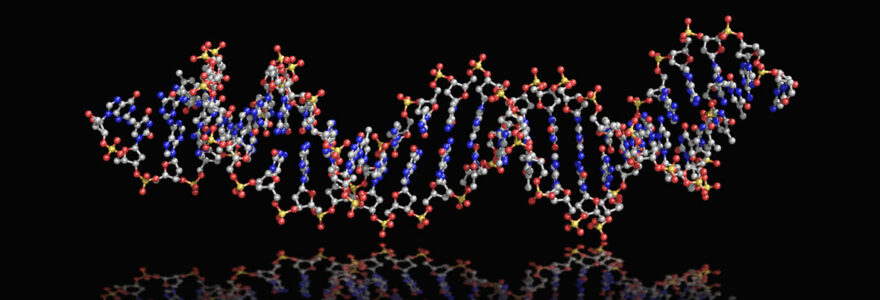Delving into the realm of molecular imaging, one encounters an intriguing tool - nucleic acid aptamers. These high-affinity ligands have begun to revolutionize the fields of cancer detection, drug delivery, and live cell imaging. Aptamers, in their versatile nature, have the power to dramatically enhance tumor imaging and targeting, with added benefits of overcoming deep tissue imaging challenges. This revolution in molecular imaging, led by companies like novaptech, has sparked interest and excitement across the globe. Yet, despite their potential, aptamers face a comparably high-concentration traditional contrast agents and the daunting task of translating from bench to bedside.
Unlocking the potential of nucleic acid aptamers in molecular imaging
Delving into the world of molecular imaging reveals a unique molecular selector : nucleic acid aptamers. The invaluable role aptamers play in precision imaging has been increasingly recognized. Their high specificity and sensitivity contribute significantly to the advantages of using aptamers in molecular imaging. The transformation of visualization of molecular targets is largely attributed to the development of aptamers.
Exploring aptamers as high-affinity ligands in cancer detection
When it comes to cancer detection, aptamers are becoming indispensable tools. Their high-affinity property allows for efficient and precise detection of cancer cells. Aptamers, compared to antibodies, have shown enhanced performance in the application of molecular imaging. This has led to a shift in preference towards aptamers in medical imaging.
Revolutionizing drug delivery with targeted aptamer therapeutics
Aptamer therapeutics are paving the way for a revolution in drug delivery systems. The ability of aptamers to target specific cells or molecules has opened doors to innovation in medical imaging. It's a promising development that is set to enhance detection and monitoring in real-time imaging.
Breaking new ground in live cell imaging with fluorescent aptamers
Fluorescent aptamers have broken new ground in live cell imaging. Their potential is being unlocked through continuous research and development. The use of aptamers in the field of imaging, particularly nucleic acid aptamers, offers a promising future for molecular imaging.
Enhancing tumor imaging and targeting through aptamer-conjugated probes
As the field of molecular imaging evolves, nucleic acid aptamers emerge as an instrumental tool. Their precise nature provides an impressive advantage for tumor targeting, offering a new perspective in the battle against cancer. The employment of probes, conjugated with aptamers, has proven to significantly enhance tumor imaging. Their unparalleled specificity allows the differentiation between healthy and tumor tissues, thus setting the stage for more accurate diagnostics and personalized treatments.
Innovative Strategies for Tumor-specific Imaging
Combining the innovative nature of molecular imaging techniques with the specificity of aptamers, a new horizon is unlocked for tumor imaging. The remarkable precision of aptamers conjugated to probes creates a unique mechanism that enhances the differentiation between healthy and tumor tissues, opening the door to more accurate diagnostics.
Boosting the Efficacy of Therapeutics with Aptamer-guided Targeting
The aptamer-guided targeting of tumors offers a promising avenue towards boosting the efficacy of therapeutics. Recent developments in the conjugation of aptamers have shown immense potential, particularly in targeted tumor therapy. The future looks promising, with the potential of conjugated aptamers in personalized diagnostics and cancer treatment being a significant area of exploration.
Overcoming Challenges in Deep Tissue Imaging with Engineered Aptamers
Deep tissue imaging presents a myriad of challenges, however, engineered aptamers have emerged as a potential solution. By enhancing the efficacy of imaging techniques, these engineered aptamers provide a tangible solution in the quest for more reliable and efficient deep tissue imaging.
Comparative analysis of aptamer-based imaging versus traditional contrast agents
In the realm of targeted imaging, a comprehensive comparative analysis reveals a marked difference between the specificity and affinity of aptamers versus traditional contrast agents. Aptamers, short strands of nucleic acids, demonstrate a higher degree of specificity and affinity towards their targets compared to conventional contrast materials. This highlights a significant advantage for aptamers in terms of biodurability and biocompatibility, providing a safer and more effective solution in imaging applications.
Further examination of the sensitivity and resolution of aptamer-based imaging techniques compared to traditional methods reveals a clear edge for the former. With their ability to bind tightly and specifically to their target molecules, aptamers result in higher resolution images - a critical factor in disease diagnosis and treatment planning. Equally important is the toxicity profile and side effects of the imaging agents used. Here again, aptamers outperform traditional contrast agents, exhibiting lower toxicity and fewer side effects.
Moreover, the ease of modification and adaptability of aptamers for specific imaging applications underscores their superiority over the limitations of traditional contrasts. These nucleic acid strands can be easily modified and adapted to suit specific imaging requirements, opening up new possibilities in the field of medical imaging. Aptamers, thus, hold immense potential in revolutionizing imaging modalities, challenging the boundaries set by traditional contrast agents.
Translating aptamer imaging from bench to bedside: challenges and opportunities
Translating aptamer imaging from bench to bedside presents several unique challenges. The first hurdle involves regulatory barriers and requirements for clinical approval of aptamers in imaging. The need for navigating through a complex set of policies and standards set by health authorities globally is a significant obstacle. Secondly, technological advancements are needed to enhance the sensitivity and specificity of aptamer imaging. Constant research and development activities are required to refine the technology and improve its efficacy.
Further, strategies are needed to overcome the stability and delivery challenges of aptamers in the human body. Improvements in drug delivery systems and the development of more stable aptamers are necessary to ensure their safe and effective use. Additionally, opportunities for customizing therapy through targeted aptamer imaging are being explored. This personalized approach to treatment could revolutionize the way diseases are managed and treated, making medicine more patient-centric.
The economic impact of integrating aptamers into clinical imaging practices is another area of analysis. The potential cost savings and improved patient outcomes could be significant, but a thorough cost-benefit analysis is necessary. Lastly, the development of partnerships between academies, industries, and health institutions is vital to accelerate the translation of aptamers from the lab to the patient. Collaborative efforts could speed up the process of bringing this promising technology to those who need it most.

